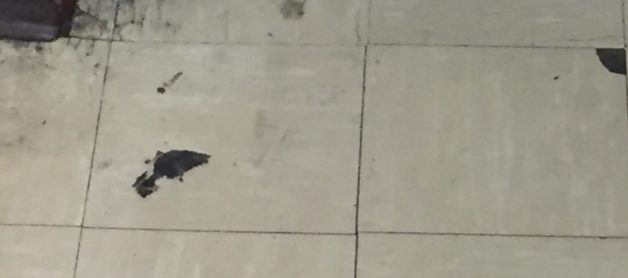Bead Blasting – Asbestos Removal Guide
What is Bead Blasting?
- Bead blasting refers to the process of propelling a stream of blast media (or abrasive material) against a surface to create a finish or remove surface deposits. The term is commonly used alongside a wide range of blast processes like sandblasting, shot blasting, grit blasting, soda blasting, and abrasive blasting for numerous “blast processes”. The process utilizes beads (made of plastic, glass, or other materials) to change the substrate surface or remove surface deposits.
When is Bead Blasting used?
Glass bead blasting is common for cleaning applications. It is also used for peening, general cleaning tarnished components, or sheen surface finishing. Plastic bead blasting is common in a variety of cleaning, deflashing, deburring, and paint stripping applications. It is common when cleaning pool tiles (removing calcium deposits), removing embedded fungus, brightening grout color, creating uniform surface finishing on machined parts, cleaning mineral specimens, and much more.
Bead blasting of floor tile mastic on concrete floors leaves the cleanest surface but there are a number of considerations. Not all abatement contractors have bead blasting machines so they have to rent the equipment. Also, the bead blasting machine cannot clean all the way to the edge of a wall so a floor grinder with a special scarifying blade should be employed. The grinder must be equipped with a cowl connected to a HEPA vacuum.
A thin section of mastic will remain in the corner but the majority of that can be removed with a scraper. The major concern with Bead Blasting and grinding is dust control. The area must be under negative air pressure and adequate wetting must be employed. The project requires full containment and the mastic debris will be friable, requiring disposal as hazardous waste.
What tools are needed for Bead Blasting?
Bead blasting is done using typical suction fed blast cabinets. Blasting systems need air compression, a blast media (sand or glass) holder/hamper, and a nozzle. The air compressor utilizes air to force the blast media through the nozzle at the required pressure. Since blast media like glass beads are smaller, they need greater pressure.
The hamper houses the blast media and mixes the media with air. The nozzle directs the blast media. The media/bead is usually round shape with varying sizes. Bigger beads have more energy making them capable of penetrating the surfaces being blasted. Smaller beads are better for covering small spaces and utilizing less energy, making them less impactful since they don’t reach as far into the surface.
How is bead blasting used in relation to Asbestos removal?
Asbestos removal must be done by individuals who have undergone asbestos removal training since Asbestos is a proven carcinogen. According to the WHO, asbestos exposure causes cancer of the larynx, lungs, and ovaries. It also causes mesothelioma (cancer of the peritoneal and pleural linings). Asbestos is responsible for other ailments like asbestosis. Currently, over 125 million people globally are exposed to asbestos at work, with half of the occupational cancer deaths linked to asbestos.
Asbestos is dangerous because asbestos-containing materials disintegrate when disturbed or damaged, releasing carcinogenic asbestos dust and fibers. The importance of removing asbestos-containing materials in old homes and buildings (built before the 1980s) can’t, therefore, be overlooked.
Bead blasting is among the most effective ways of getting rid of asbestos-containing materials in residential and commercial buildings. Dustless bead blasting is effective in preventing the dispersal of carcinogenic asbestos dust and fibers when materials containing asbestos are being removed. The use of water alongside blast media minimizes dust production. It also eliminates water pools preventing contaminated runoff from escaping and reaching water bodies/networks that host water for domestic use.
Dustless bead blasters are the safest, fastest, and most effective tools for removing asbestos compared to conventional dry sandblasters. The latter asbestos removal method doesn’t contain asbestos dust and fibers from being released into the air. Wet blasting isn’t any better since it increases the risk of contaminating water bodies.
Professional asbestos removal via Dustless Bead Blasting
Employers in the real estate industry, housekeeping, renovation, and related industries with employees who may work or clean environments with asbestos need accredited training as per the EPA.
Under OSHA regulation 1926.1101(K), class IV employees must undergo a 2-hour asbestos awareness training program yearly. Class IV employees encompass all employees likely to contact asbestos or work in/clean environments with asbestos. Class IV employees also encompass employees who work after abatement projects but aren’t necessarily trained to abate asbestos.
If you offer dustless bead blasting for removing asbestos and/or asbestos-containing materials, you must train your workers on handling asbestos. The training is also ideal for DIY enthusiasts who may want to work in areas or with materials containing asbestos.
Approved asbestos awareness training programs can be accessed through providers like Haztrainer.
Haztrainer is among the few online asbestos awareness training providers offering flexible, OSHA-approved, and affordable programs. Haztrainer trainees complete training at their own convenience online. They receive tailor-made programs with videos and get access to a certified instructor. Trainees also get gift cards and signed certificates when they complete the training. Haztrainer asbestos awareness training also complies with EPA and AHERA guidelines.

Recent Comments